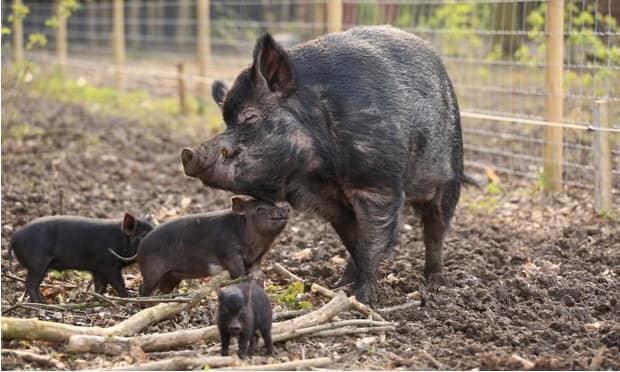Humane alternatives to killing rampant creatures such as wild boar, deer and grey squirrels are being developed
Conflicts between humans and wildlife are triggering growing numbers of disease outbreaks, road accidents and crop damage. And the problem is likely to get worse unless new, humane measures to curtail animal numbers are developed in the near future, say scientists.
It is a critical environmental issue that will be debated this week at a major conference in Italy where experts will discuss how best to limit numbers of grey squirrels, wild boar, deer, feral goats, pigeons, parakeets and other creatures that are causing widespread ecological damage in many countries.
A key approach to be highlighted at the meeting will be the need to develop contraceptives for animals. These would provide conservationists and farmers with a means to curtail animal numbers in a humane way, say researchers.
Wild boar provide an illustration of the issues involved. Their numbers are rising across Europe, and UK breeding populations have been established in areas such as the Forest of Dean. With their large snouts and muscular necks, boar are good at rooting up fungi and seeds and can destroy crops, vulnerable habitats, ground-nesting animals and fragile root systems. Wild boar have also been linked to the spread of African swine fever to domestic pigs.

“Controlling numbers of animals like wild boar used to be achieved by shooting them, but hunting is not as popular as it used to be and is also more expensive, requiring expensive licences,” said Dr Giovanna Massei, Europe director of the Botstiber Institute for Wildlife Fertility Control at York University.
She added: “Numbers of individuals who hunt animals are declining in many parts of Europe. As a result, controls of boar populations have weakened.”
One solution is to develop boar contraceptives. “Preventing these animals from breeding is a humane way to limit numbers,” added Massei, who will be speaking at the European vertebrate pest management conference in Florence.
In the US and Europe, scientists have launched projects aimed at developing contraceptive chemicals that could be mixed with food and would drastically limit boar fertility. “It is not easy to develop contraceptives but the good news is that once we get one, we have a way to deliver it,” said Messai.
The delivery method is known as the Boar-Operated System and it uses metal cones placed over dishes of food that only wild pigs can lift with their snouts. Other animals cannot access the plates. “That means we can get contraceptives into boar and only boar,” said Massei.
A similar approach has already been implemented to tackle grey squirrels. After the rodent was introduced to the UK from the US in the 19th century, its numbers have reached 2.7 million and it threatens to replace native red squirrels. Grey quirrels also cause considerable damage to UK woodlands by stripping bark from trees.
Massei and other scientists are now carrying out research on an oral contraceptive in the form of a vaccine that prompts the squirrel’s immune system to reduce the production of sex hormones, leaving both males and females infertile.
Mixed with hazelnut spread – a top squirrel treat – the drug is placed in pots in feeding boxes that only they can access. The environment minister, Richard Benyon, recently argued that the project could help eradicate the grey squirrel in the UK – without killing them.

Other contraceptive targets include deer. Apart from the widespread crop and woodland destruction they cause, deer are involved in car accidents that injure an estimated 700 people a year: some due to collisions with vehicles, others because drivers swerved to avoid hitting the animals.
Deer vaccines have been developed but problems remain about delivering them to their targets.
The development of animal oral contraceptives will not be sufficient on their own to remove the problems posed by wildlife and human conflicts, admitted Massei: “However, they will certainly be an important asset in dealing with the problem. The crucial point is that we have too many people and too many animals, and that is causing conflict.
“We need to control numbers in ways that are publicly supported, and that means relying on non-lethal methods which are popular with the public.”
